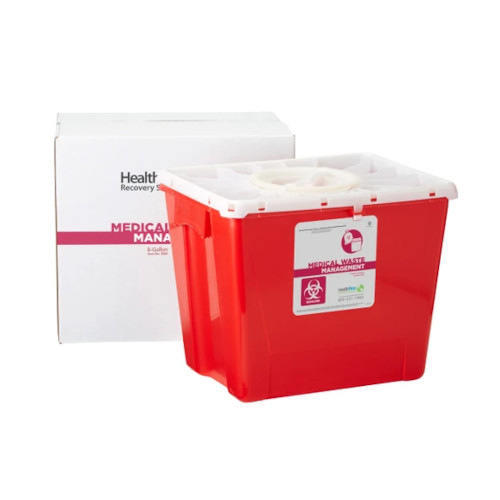Safe and Secure: The Conclusive Choice for Specialist Medical Waste Removal Solutions
Safe and Secure: The Conclusive Choice for Specialist Medical Waste Removal Solutions
Blog Article
Discovering Various Garbage Disposal Options for a Cleaner Environment
In the quest of a cleaner atmosphere, the administration of garbage disposal has become a crucial focal factor for sustainable development. With a wide variety of garbage disposal options offered, ranging from conventional land fill methods to innovative waste-to-energy technologies, the choice of how we manage our waste has far-reaching implications for our earth's wellness. By examining the different methods and methods used in recycling, composting, incineration, landfill monitoring, and waste-to-energy processes, a deeper understanding of their impacts and performance can be gotten. The quest for optimal garbage disposal techniques that focus on environmental preservation while satisfying the needs of a growing populace remains a pushing worry in today's world.
Recycling Techniques
Carrying out effective recycling techniques is crucial in decreasing waste and promoting sustainability in our environment. Recycling entails the procedure of transforming waste materials right into recyclable challenge prevent unneeded disposal. One of the most usual recycling methods is worldly recuperation, where materials like paper, glass, metal, and plastic are accumulated, sorted, and refined to create brand-new products. This process not only preserves natural resources but likewise minimizes energy consumption and greenhouse gas exhausts connected with producing new products from the ground up.
One more vital recycling approach is composting, which involves decaying natural waste like food scraps and yard trimmings into nutrient-rich soil. This procedure not only draws away natural waste from garbage dumps yet also generates a valuable resource for horticulture and agriculture. In addition, upcycling is an innovative recycling technique that includes transforming old or disposed of materials into products of higher high quality or value. By integrating these various reusing techniques into our waste administration techniques, we can substantially lower our ecological impact and relocate in the direction of a much more lasting future.

Composting Strategies
Reliable waste monitoring techniques, such as reusing methods, lead the way for a cleaner environment, and currently, shifting the emphasis to 'Composting Techniques', we discover sustainable ways to decay organic waste for ecological benefit. medical waste removal near me.
Composting is a natural process that changes organic waste, like food scraps and backyard trimmings, right into a nutrient-rich soil amendment. The key to successful composting depends on developing the best equilibrium of environment-friendly products, such as vegetables and fruit scraps, and brown products, like dried branches and fallen leaves. These products disintegrate with the aid of microorganisms, breaking down the waste right into important garden compost.
There are different composting methods offered to fit various demands. Standard yard composting involves layering natural products in a container or heap and on a regular basis transforming the combination to freshen it. Vermicomposting, on the various other hand, uses worms to damage down organic matter right into compost (click here). For those with minimal space, interior composting systems supply a convenient service. By using composting techniques, we can reduce the quantity of waste sent out to land fills while creating a valuable product for improving dirt and supporting plant growth.
Incineration Cons and pros
Incineration, as a waste disposal method, presents both benefits and drawbacks that merit cautious factor to consider in the world of sustainable waste monitoring methods. On the favorable side, incineration can considerably lower the volume of waste, lessening the requirement for land fill area and possibly reducing greenhouse gas exhausts.
Furthermore, the high first investment and operational costs of incineration centers present economic obstacles, making it a much less cost-effective option contrasted to various other visit the website waste management approaches. Mindful surveillance and law are crucial to reduce these negative effects and maximize the advantages of incineration as component of an extensive waste administration method.
Land Fill Monitoring Methods
Landfills play a crucial function in waste monitoring and environmental preservation by supplying a control system for the disposal of solid waste materials. Effective land fill management methods are vital to minimize ecological influences and guarantee the long-term sustainability of these garbage disposal websites. One essential approach is correct waste compaction to optimize the usage of offered room within the land fill (click here). By condensing the waste, the volume is lowered, permitting for even more waste to be fit in time.
Additionally, the implementation of daily cover methods is crucial in decreasing smells, stopping clutter, and reducing the attraction of insects. Covering the disposed waste at the end of each day aids to contain smells and prevent potential ecological contamination. Additionally, the surveillance of landfill gas emissions and leachate degrees is vital in making sure that ecological criteria are fulfilled and that any type of possible risks to bordering environments are minimized.

Waste-to-Energy Technologies
One of the innovative methods to waste monitoring includes taking advantage of Waste-to-Energy modern technologies to transform strong waste into usable energy resources. Waste-to-Energy (WtE) modern technologies encompass a variety of processes that intend to extract energy from waste products via thermal, chemical, or biological ways. This conversion procedure not just lowers the volume of waste that finishes up in land fills yet likewise generates beneficial power resources such as electrical power, warmth, or biofuels.
Incineration entails shedding waste at high temperatures to generate heat and power. Gasification transforms waste into a syngas, which can be made use of for power generation or chemical manufacturing.
Carrying out Waste-to-Energy technologies can assist minimize environmental issues linked with traditional garbage disposal methods while simultaneously giving a renewable resource resource. Cautious factor to consider must be given to exhausts control and making sure the sustainability of feedstock supplies for these modern technologies to be really helpful for a cleaner atmosphere.

Conclusion
In verdict, discovering various waste disposal alternatives such as recycling, composting, incineration, garbage dump management, and waste-to-energy innovations is essential for promoting a cleaner setting - click here. Each technique has its very own advantages and obstacles, but by making use of a mix of these approaches, we can work in the direction of minimizing the amount of waste that winds up in land fills and inevitably contribute to a much more sustainable future for generations to find
With a plethora of waste disposal options readily available, varying from traditional landfill methods to cutting-edge waste-to-energy technologies, the selection of exactly how we handle our waste has far-ranging effects for our earth's well-being. medical waste disposal.Incineration, as a waste disposal method, presents both benefits and downsides that warrant cautious consideration in the world of sustainable waste monitoring practices.Garbage dumps play a crucial duty in waste monitoring and ecological conservation by supplying a containment system for the disposal of strong waste materials. By condensing the waste, the volume is lowered, allowing for even more waste to be accommodated over time
One of the ingenious techniques to throw away management involves using Waste-to-Energy innovations to transform solid waste right into functional energy resources.
Report this page